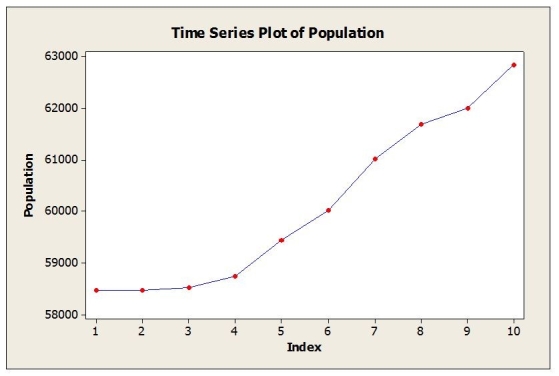Essay
Annual estimates of the population in a certain city from 1999 (t = 1) onward are shown in the time series graph below.  a. Identify the dominant time series component(s) in the data.
a. Identify the dominant time series component(s) in the data.
b. Below are the results from fitting a linear trend model to the data. Use this model to estimate the population in this city for 2008 (t = 10).  c. Below are the results from fitting a quadratic trend model to the data. Use this model to estimate the population in this city for 2008 (t = 10).
c. Below are the results from fitting a quadratic trend model to the data. Use this model to estimate the population in this city for 2008 (t = 10).  d. The actual population estimate for 2008 is 62,828. Which model does better? Why?
d. The actual population estimate for 2008 is 62,828. Which model does better? Why?
Correct Answer:

Verified
a. Trend
b. 62,486
c. 63,009
d...View Answer
Unlock this answer now
Get Access to more Verified Answers free of charge
Correct Answer:
Verified
b. 62,486
c. 63,009
d...
View Answer
Unlock this answer now
Get Access to more Verified Answers free of charge
Q12: Consider the following to answer the question(s)
Q13: Quarterly sales data (in $10,000) for a
Q14: Consider the following to answer the question(s)
Q15: Consider the following to answer the question(s)
Q17: Consider the following to answer the question(s)
Q18: Consider the following to answer the question(s)
Q19: Consider the following to answer the question(s)
Q20: Daily closing stock prices for Kyocera Corporation
Q21: Consider the following to answer the question(s)
Q23: Consider the following to answer the question(s)